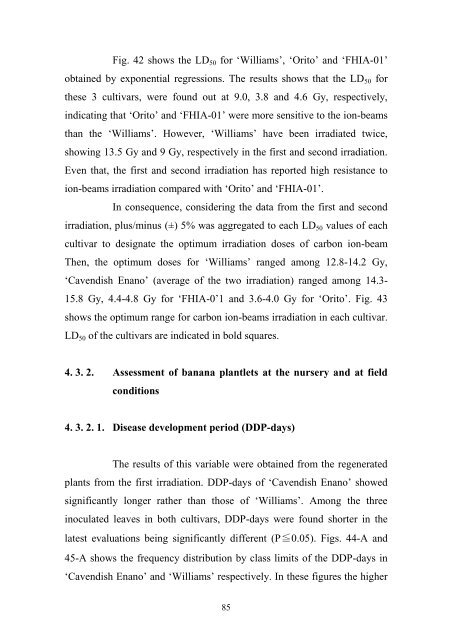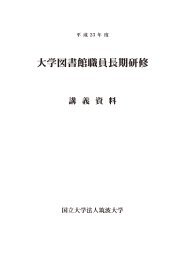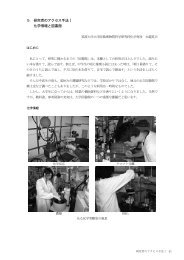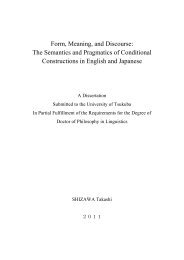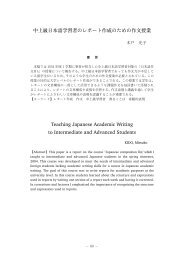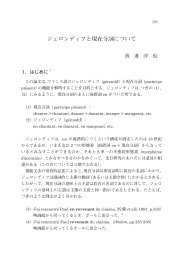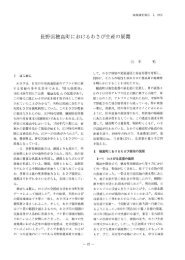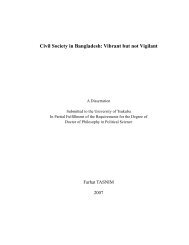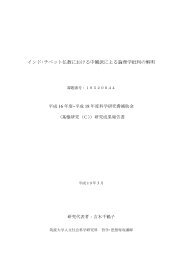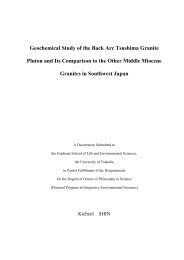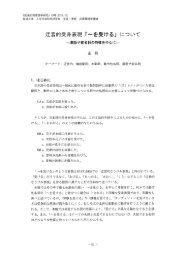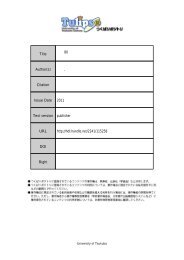Gamma Rays and CarbonIon-Beams Irradiation for Mutation ...
Gamma Rays and CarbonIon-Beams Irradiation for Mutation ...
Gamma Rays and CarbonIon-Beams Irradiation for Mutation ...
Create successful ePaper yourself
Turn your PDF publications into a flip-book with our unique Google optimized e-Paper software.
Fig. 42 shows the LD50 <strong>for</strong> ‘Williams’, ‘Orito’ <strong>and</strong> ‘FHIA-01’<br />
obtained by exponential regressions. The results shows that the LD50 <strong>for</strong><br />
these 3 cultivars, were found out at 9.0, 3.8 <strong>and</strong> 4.6 Gy, respectively,<br />
indicating that ‘Orito’ <strong>and</strong> ‘FHIA-01’ were more sensitive to the ion-beams<br />
than the ‘Williams’. However, ‘Williams’ have been irradiated twice,<br />
showing 13.5 Gy <strong>and</strong> 9 Gy, respectively in the first <strong>and</strong> second irradiation.<br />
Even that, the first <strong>and</strong> second irradiation has reported high resistance to<br />
ion-beams irradiation compared with ‘Orito’ <strong>and</strong> ‘FHIA-01’.<br />
In consequence, considering the data from the first <strong>and</strong> second<br />
irradiation, plus/minus (±) 5% was aggregated to each LD50 values of each<br />
cultivar to designate the optimum irradiation doses of carbon ion-beam<br />
Then, the optimum doses <strong>for</strong> ‘Williams’ ranged among 12.8-14.2 Gy,<br />
‘Cavendish Enano’ (average of the two irradiation) ranged among 14.3-<br />
15.8 Gy, 4.4-4.8 Gy <strong>for</strong> ‘FHIA-0’1 <strong>and</strong> 3.6-4.0 Gy <strong>for</strong> ‘Orito’. Fig. 43<br />
shows the optimum range <strong>for</strong> carbon ion-beams irradiation in each cultivar.<br />
LD50 of the cultivars are indicated in bold squares.<br />
4. 3. 2. Assessment of banana plantlets at the nursery <strong>and</strong> at field<br />
conditions<br />
4. 3. 2. 1. Disease development period (DDP-days)<br />
The results of this variable were obtained from the regenerated<br />
plants from the first irradiation. DDP-days of ‘Cavendish Enano’ showed<br />
significantly longer rather than those of ‘Williams’. Among the three<br />
inoculated leaves in both cultivars, DDP-days were found shorter in the<br />
latest evaluations being significantly different (P≦0.05). Figs. 44-A <strong>and</strong><br />
45-A shows the frequency distribution by class limits of the DDP-days in<br />
‘Cavendish Enano’ <strong>and</strong> ‘Williams’ respectively. In these figures the higher<br />
85


